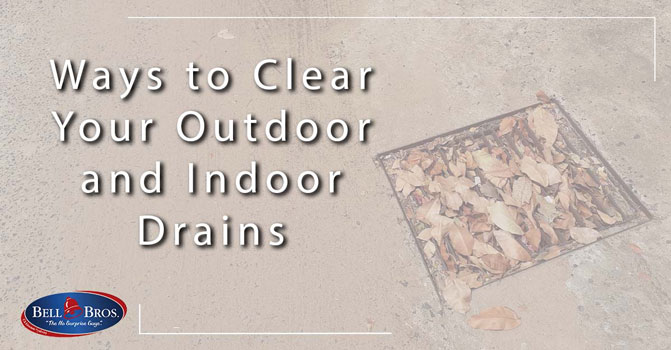
Most of us don’t pay a lot of attention to our plumbing and drains – unless something goes wrong. If you have a clog or a slow drain, it’s not just a nuisance. It can be a major household disruption and a health hazard.
There are many things that can clog your drains, from oil and grease to foreign objects and “flushable” materials. Major clogs need a professional plumber, but some drains can be cleared on your own at home.
Common Home Plumbing Systems
Your home has three main plumbing systems: potable water, sanitary drainage, and storm drainage. The potable water system controls the water that flows into your home for cleaning, drinking, bathing, cooking, etc. The water that’s used must leave your home, which flows through the sanitary drainage system. Storm drainage is the outdoor drainage system that handles weather-related drainage.
Ways to Keep Your Drains Clear
Major clogs or stubborn clogs should be handled by professional plumbers. Slow drains or minor clogs may be able to be fixed on your own, however. Here are some of our best tips:
Pour Boiling Water Down the Drain
If you have a clog without standing water, pouring boiling water down the drain may be enough to dissolve it and get it flowing again. It’s also a gentle and easy way to clear your drains without chemicals or a professional plumbing appointment.
Try Dish Soap
Liquid dish soap is used to break up grease and oil on dishes, pots, and pans. If your pipes are slow from the buildup of grease and oil, it can do the same. You only need to pour an ounce or two into your drain to dissolve the buildup. If you use too much, you can create more buildup that will harden and make the clog worse.
Rely on a Household Remedy
Chemical drain cleaners are often the go-to for homeowners, but there are easier, gentler, and safer ways to handle a slow drain or clog. These cleaners have harsh chemicals that will work on a clog, but they degrade your pipes and present a health hazard if they splash into your skin, eyes, or mouth.
Try Drain Unclogging Tools
If you think there’s hair or a foreign object in your pipes, dissolving the clog won’t work. Plastic drain tools are helpful for capturing the clog and pulling it out. You can find these tools at hardware stores or department stores.
Insert the plastic drain tool into the pipe as deep as it will go, then pull it straight out slowly. If nothing comes up, try a few times, twisting a bit to see if you can catch the debris on the barb.
Some people use wire hangers this way, but that’s not recommended. You can easily damage your pipe or get the hanger stuck, which will only create more problems.
Take Apart the P Trap
If you’re not having luck with the previous methods, you can try some DIY plumbing. If you’re comfortable, you can disassemble your pipe and take out the P trap, which is a curved part of the pipe that prevents sewer gas from coming back up into your home. This is where a lot of clogs end up and difficult to reach with a drain clearing tool.

Place a bucket beneath the pipe to catch water and then loosen the plastic nuts that hold the P trap together. You can do this by hand or with tongue and groove pliers. Once you have it detached, remove the trap elbow and clear the debris into the bucket. Reassemble the pipe and check if the drain is working properly.
Are you dealing with a tough clog? Contact the pros at Bell Brothers to see how we can help!


